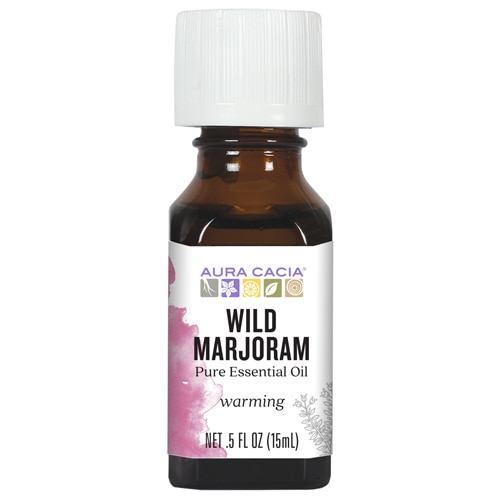Instead of reaching for an over the counter pain reliever the next time menstrual cramps set in, consider using pain relief that nature created: essential oils. It turns out that menstrual cramps relieved by essential oils.
Here we go folks! I’m pretty excited about this one. You may not know this, but I am a science geek at heart (and by training) and halfway to hippie by nature. I love reviewing the scientific evidence for (or against) natural remedies. So, let’s go!
Cramping at the onset of menstruation is one of the most common gynecological complaints in adolescent and adult females. It is estimated that over half of adolescent and college-aged women will experience painful menstrual cramps regularly. Some estimates suggest that over 80% of college-aged women suffer from monthly pain.
A randomized, double-blind, clinical trial published in the May 2012 issue of The Journal of Obstetrics and Gynaecology Research by Ming-Chiu Ou and colleagues showed that a cream consisting of essential oils was sufficient to dramatically reduce the pain associated with menstrual cramping.
The Experiment
The study group of patients diagnosed with primary dysmenorrhea (painful menstrual cramping) applied this cream to the abdominal area every day between menstrual cycles. Control subjects (who were also diagnosed with dysmenorrhea) used a synthetically scented jojoba cream in the same way. No cream was applied during menstruation, only between cycles.
Subjects reported their pain during the first 3 days of menstruation before using the cream, and after approximately one month of using the cream.
The Results
The aromatherapy massage that women performed each day between periods lead to fewer days of menstrual pain compared to the month before treatment, and in comparison to a control group that used the fake cream for a month.
It is interesting to note, that massage of the lower abdominal area with the fake cream also showed a trend toward reduced pain the following month. This suggests that the massage therapy itself contributed to the beneficial effects, or that there was a placebo effect. Perhaps massage may act synergistically with the essential oils to reduce menstrual cramp pain? The authors argue that massage provides only immediate, and not long-lasting relief, but it is unclear from the results in this study.
These researchers did not study the effects of inhaling the essential oils, or massaging the cream into another body area to determine the potential benefits of essential oils alone.
Nor do we know whether the essential oils would be of further benefit if used during the acute pain since subjects did not use the cream once menstruation began.
Also, the authors do not comment on any individual differences in the subjects. That is, we do know whether some individuals saw no benefit while others saw significant improvement. Since all data was presented as means with standard deviations, I am left to assume that the response to treatment with essential oils was similar among all subjects with variations along a spectrum.
Get the Goods
The three oils used in this study were lavender, clary sage, and marjoram. Since there are many species of these plants, it is important to use medicinal grade oils (not perfume-grade) in order to see these results. Here I provide the links for the oils from the exact plant species used in the study (aff links):

Aura Cacia 100% Pure Essential Oil Wild Marjoram 0.5 fl oz
How It Works
Each essential oil is known for particular healing properties. Let’s take a look at them first:
- Lavender Oil can relieve anxiety, depression and pain in previous human studies. Previous animal studies support its use as an anti-inflammatory (reduces inflammation) and analgesic (reduces pain).
- Clary Sage Oil regulated menstrual cycles, and alleviated symptoms of menopause in past studies.
- Marjoram Oil has been demonstrated as an analgesic, and is shown to dilate blood vessels, which relieves menstrual cramps in previous studies.
In this particular study, four molecular components of the oils used accounted for more than 79% of the oil composition. Those four components have potent properties themselves:
- The lavender and clary sage essential oils contributed two specific molecular components that are known to be anti-inflammatory and relieve pain in both humans and animals. In addition, one of those molecules inhibits the secretion of the prostaglandins that cause uterine muscle contractions. Inhibiting uterine muscle contractions during PMS is likely a good thing.
- Marjoram oil has a component that also interferes with the prostaglandin pathway, and has pain-relieving properties. Another component in marjoram is a known local anesthetic. More good things.

What do you think about menstrual cramps relieved by essential oils? Do you already use essential oils for PMS? Are you willing to try it? Join in the conversation below…
Other complementary natural remedies that have shown promise for menstrual cramps are acupressure, rose tea, transcutaneous electrical nerve stimulation (TENS), dietary changes and behavioral interventions. Typically, dysmenorrhea sufferers use non-steroidal anti-inflammatory drugs (NSAIDs), but these over-the-counter pain relievers can contribute to indigestion, headaches, and drowsiness.
Primary dysmenorrhea is defined as spastic abdominal cramping at the onset of menstruation that lasts for 2-3 days. The condition is diagnosed by a physician in the absence of any pathology that could account for the pain. If you suffer from severe abdominal pain, consult a physician for proper diagnosis. Do not use clary sage oil if you are pregnant or may become pregnant. All the information provided in this article is intended for educational purposes – now you know that in scientific studies menstrual cramps relieved by essential oils – and should not be used to diagnose, treat, prevent or cure any disease. Always consider consulting with your health care provider before making any changes to your diet, lifestyle, or supplements.
This article was originally published at The Science of Natural Health, and has been reprinted here with the author’s permission (mine).
There is also a facebook group for my fellow simple-living, science-loving, halfway-to-hippie people. Come join us!
Wishing you all the simple things,
Zara

